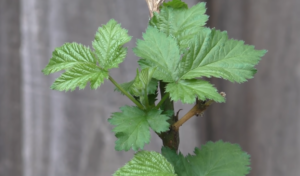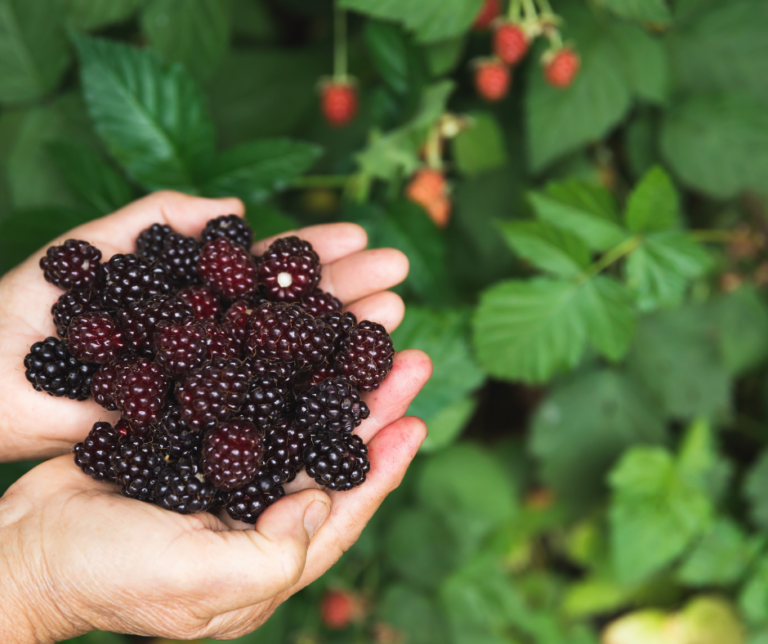Growing blackberry plants can be a rewarding experience for gardeners of all levels. These bramble fruits are not only delicious but also packed with health benefits. Whether you want to grow them in your backyard or commercially, understanding the types, growing conditions, and care required for blackberries will ensure a healthy and fruitful plant.
Introduction to Blackberry Plants
Blackberry plants are members of the Rubus genus, known for their thorny canes and trailing vines. Native to temperate regions, blackberries thrive in areas with adequate sunlight and well-drained soil.
If you’re looking to grow a productive berry patch, you’ll need to learn the different varieties, how to plant them, and the care they require. From erect to semi-erect, each type of blackberry has unique needs. Growing your own berries offers not only fresh fruit but also nutritional benefits, including vitamins and antioxidants essential for a healthy diet. To complement your gardening efforts, you may want to explore tips on boosting your plants with manure tea.
Types of Blackberry Plants
There are several types of blackberry plants, each with its own growth habit and characteristics. Choosing the right type depends on your climate, space, and preferences.
- Erect Blackberries: These plants grow upright and are usually self-supporting, though they benefit from some trellising.
- Semi-Erect Blackberries: These need support to grow properly and produce large, juicy fruits.
- Trailing Blackberries: These varieties spread along the ground and need trellising to keep the fruit clean and healthy.
- Thorny vs. Thornless: While thorny varieties are more traditional and hardy, thornless blackberries are easier to manage and harvest.
For a detailed guide on how to care for other types of plants, check out Growing Sunflowers from Seed, which provides valuable insights that can also apply to blackberry plants.
Ideal Growing Conditions for Blackberry Plants
Growing blackberry plants successfully requires an understanding of the right environment for these plants to thrive. Here are the key growing conditions:
- Climate: Blackberries prefer temperate climates with moderate winters. They can tolerate heat but perform best in cooler conditions.
- Soil Type: Well-drained, slightly acidic soils (pH 5.5-7.0) are ideal for blackberries.
- Sunlight: Blackberries need full sun for at least 6-8 hours a day.
- Watering: While they need regular watering, blackberries don’t like to be waterlogged. Ensure the soil drains well to avoid root rot.
You can use natural fertilizers to boost your blackberry plant’s growth, similar to how you would bury fish scraps as natural fertilizer.
Planting Blackberry Plants: A Step-by-Step Guide

Once you’ve chosen the type of blackberry plant, it’s time to get them in the ground. Here’s a simple guide to planting blackberries:
- Choose the Right Location: Ensure the site gets full sunlight and has well-drained soil.
- Spacing: Leave about 3-4 feet between plants to give them room to grow.
- Planting Depth: For bare-root plants, dig a hole deep enough to accommodate the roots without bending. Place the plant with the crown at soil level.
- Transplanting: Water well after planting and apply mulch around the base to conserve moisture.
Mulching is crucial for blackberries as it helps retain soil moisture and keeps the roots cool during hot periods.
Caring for Blackberry Plants
Proper care is vital to ensure healthy, fruit-bearing blackberry plants. Below are key care practices:
- Fertilization: Feed your plants with a balanced fertilizer in early spring and after harvest to promote growth.
- Pruning: Prune dead or weak canes during late winter to encourage new growth.
- Pest and Disease Control: Common diseases include anthracnose and cane blight. Treating your plants with organic pesticides and regularly inspecting for pests like aphids can help maintain their health.
Pruning is an essential part of blackberry care to encourage fruit production and keep your plants healthy.
Harvesting and Storing Blackberries
Blackberries are ready to harvest when they turn black, are slightly soft to the touch, and come off the plant easily. Here are some key harvesting tips:
- Best Time to Harvest: Blackberries are typically ready in mid to late summer, depending on the variety and climate.
- Harvesting Tools: Use your hands or a berry picker to gently remove the ripe fruit.
- Storing: Fresh blackberries can be stored in the fridge for up to a week. For longer storage, freeze or dry the berries for later use.
Nutritional and Health Benefits of Blackberries
Blackberries are not just delicious; they are packed with essential nutrients and health benefits. They are an excellent source of:
- Vitamin C: Boosts immunity and promotes healthy skin.
- Antioxidants: Blackberries are rich in antioxidants like anthocyanins, which help fight inflammation.
- Fiber: Supports digestive health and may help reduce cholesterol levels.
Eating blackberries regularly can improve cardiovascular health, support the immune system, and promote overall wellness.
Popular Uses of Blackberries
- Culinary Uses: Blackberries are versatile and used in jams, desserts, sauces, and beverages.
- Medicinal Uses: Traditionally, blackberries have been used to treat digestive issues and as an anti-inflammatory remedy.
Blackberries can be enjoyed fresh, cooked, or preserved, making them a staple in many kitchens.
Common Problems with Blackberry Plants
Even with proper care, you might encounter issues with blackberry plants. Here are some common problems:
- Diseases: Fungal infections like root rot or cane blight can affect plant health. Ensure good air circulation and avoid overwatering to reduce the risk.
- Pests: Aphids, spider mites, and Japanese beetles are common pests that feed on blackberry plants. Regularly check your plants and treat them with insecticidal soap or neem oil.
Addressing these problems early ensures a healthy and productive blackberry patch. learn more about common Blackberry Pests and Diseases
Propagation of Blackberry Plants
Propagating blackberry plants is a great way to expand your garden. Here are common methods:
- Cuttings: Take stem cuttings in the fall and root them in a suitable growing medium.
- Root Division: This involves dividing the root system of mature plants and transplanting the sections.
- Layering: Bend a cane to the ground, bury a section of it, and it will root over time.
Propagation is a simple and effective way to grow more plants without having to purchase new ones.
FAQs About Blackberry Plants
How long does it take for blackberry plants to bear fruit?
It usually takes two years for a blackberry plant to bear fruit after planting. However, once established, they will produce fruit annually.
Can blackberry plants survive winter?
Yes, many blackberry plants are cold-hardy and can survive winter in temperate regions. However, some varieties may need protection in extremely cold climates.
How much sun do blackberry plants need?
Blackberry plants require full sun, meaning at least 6-8 hours of direct sunlight per day to thrive and produce fruit.
How do you prune blackberry bushes?
Prune old canes in the winter and thin out weaker growth to encourage healthier, more productive plants.
Can blackberries grow in containers?
Yes, blackberries can be grown in large containers, but they will need regular watering and fertilization.
Conclusion: Why You Should Grow Blackberry Plants
Blackberry plants are a rewarding addition to any garden. They are relatively easy to grow, offer a range of culinary and health benefits, and can be propagated easily. With proper care and maintenance, you can enjoy fresh, homegrown blackberries year after year.
